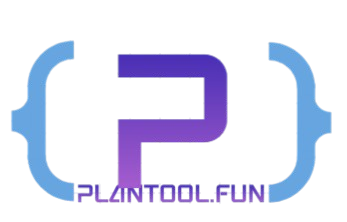Understanding the Fullstack Development Landscape
Fullstack development encompasses both the frontend and backend aspects of web development, creating a holistic skill set that is increasingly valuable in today’s technology-driven landscape. The frontend refers to everything that users engage with directly in their web browsers, involving technologies such as HTML, CSS, and JavaScript. This part of development focuses on user experience and interface design, aiming to create interactive and visually appealing applications. Proficiency in frontend frameworks like React, Angular, or Vue.js can significantly enhance a developer’s ability to build dynamic user experiences.
On the other hand, backend development encompasses server-side operations, database interactions, and application logic. It is essential for handling data processing and storage, as well as ensuring that the frontend can retrieve the necessary data efficiently. Backend developers typically work with languages such as Python, Ruby, Java, or PHP, along with frameworks like Node.js or Django. Understanding databases, including SQL and NoSQL options, is also crucial for managing data effectively.
The importance of mastering both frontend and backend development cannot be overstated. A fullstack developer is equipped to understand how the two components interact, allowing for more seamless integration and communication between them. This comprehensive knowledge not only enhances problem-solving abilities but also facilitates better collaboration within development teams. As businesses increasingly seek versatile developers who can navigate across these domains, being a fullstack developer becomes a significant advantage in the job market. The skills acquired through fullstack training also provide learners with the flexibility to adapt to various technological changes and project requirements.
Crafting a 6-Month Learning Plan
Transitioning into a fullstack developer role within a span of six months requires careful planning and structured learning. The first step in this journey is to establish both short-term and long-term goals that will serve as milestones throughout your educational path. Short-term objectives could include mastering fundamental programming languages like HTML, CSS, and JavaScript for frontend development and understanding basic server-side languages such as Node.js or Python for backend functionality. Long-term goals might focus on project-based outcomes, such as completing a fully functional web application by the end of the six months.
To facilitate your learning, it is vital to curate a list of recommended resources that cover both frontend and backend technologies comprehensively. Online platforms like freeCodeCamp, Codecademy, and Udemy offer extensive courses tailored to aspiring fullstack developers. Additionally, leveraging documentation from frameworks such as React for frontend and Express.js for backend can provide invaluable insights into practical functionalities and industry standards. Books focused on web development can also serve as beneficial literature throughout your study.
Equally important is striking the right balance between learning theoretical concepts, engaging in practical exercises, and undertaking project work. To achieve this, consider dedicating specific hours each week to both guided learning and hands-on practice. For example, you might allocate three days a week for studying new concepts and frameworks, while reserving the remaining time for practical coding challenges and building a personal project. Collaborative platforms like GitHub can also foster a sense of community and accountability as you begin to share and refine your projects with other developers.
Ultimately, an organized approach that incorporates these components will enhance your knowledge retention and readiness for a fullstack developer role upon completion of the six-month timeframe.
Integrating Frontend and Backend Learning
To become a proficient fullstack developer, it is imperative to master the integration of frontend and backend learning effectively. The interactions between these two areas are crucial in the development of dynamic web applications. A robust understanding of frontend technologies, such as HTML, CSS, and JavaScript, lays the groundwork for developing user interfaces, while backend technologies, including databases and server-side languages, handle application logic and data management. Learning both domains concurrently can enhance one’s ability to create cohesive applications that serve the user’s needs while ensuring seamless functionality behind the scenes.
One key concept in this integration is the use of RESTful services. These services enable the communication between the client-side (frontend) and server-side (backend) components of an application. Understanding how to construct and consume RESTful APIs allows developers to send data requests and process responses, facilitating interaction between the user-facing and server-side functionalities. This knowledge can be further extended by learning about database management systems, which are integral to storing and retrieving data efficiently. As a fullstack developer, familiarity with both SQL and NoSQL databases is advantageous, as it allows for the selection of the right database technology based on the application’s requirements.
Hands-on experience in building fullstack projects is key to solidifying the integration of frontend and backend skills. Developing projects that require both domains encourages the application of learned concepts and enhances problem-solving abilities. For instance, creating a simple web application that displays data fetched from a backend service can illuminate how data flows between the frontend and backend components. Furthermore, collaborating with other developers can provide valuable insights and foster a deeper understanding of best practices and design patterns. Emphasizing practical application in the learning process not only enriches knowledge but also equips aspiring developers with the skills needed for real-world projects.
Building and Showcasing Your Portfolio
Creating a compelling portfolio is essential for aspiring fullstack developers looking to make a significant impression on potential employers. A well-structured portfolio serves not just as a collection of completed projects, but also as a testament to your skills, creativity, and growth within the realm of both frontend and backend development. To begin, select a diverse range of projects that reflect your abilities, ensuring to include examples that highlight both your design and programming skills.
When choosing projects, consider including those that solve real-world problems or exhibit innovative solutions. Projects such as building a personal website, developing a web application, or contributing to open-source software can effectively demonstrate your technical prowess. It is crucial to fully document the development process, as this aids in narrating your journey to potential employers. Include details about the challenges faced during development, the technologies used, and how you overcame obstacles, showcasing your problem-solving skills.
Moreover, effective presentation is key in displaying your work. The layout of your portfolio should be clean and intuitive, making it easy for viewers to navigate and explore your projects. Utilize modern web design principles to create an aesthetically pleasing interface while ensuring that each project is described succinctly. Adding context such as project objectives, your role, and the outcome of the project can provide valuable insights into your contributions.
In addition, the tech industry is constantly evolving, making it essential to keep your portfolio up to date. Embrace continuous learning by exploring new frameworks, languages, and tools that can enhance your fullstack capabilities. Actively participating in relevant online communities or attending workshops can provide fresh ideas and techniques to incorporate into your work. Ultimately, building a strong portfolio is an ongoing process that reflects not only your past achievements but also your commitment to growth in the fast-paced world of web development.


No responses yet